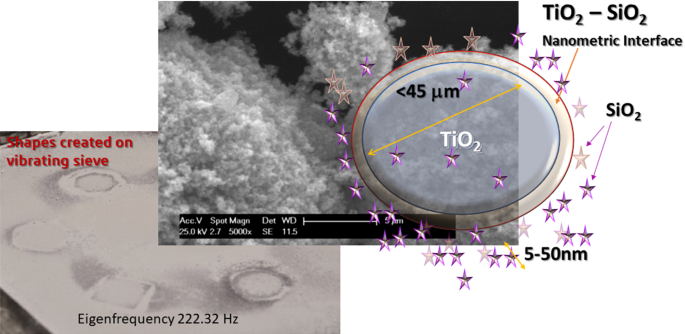当前位置:
X-MOL 学术
›
Granular Matter
›
论文详情
Our official English website, www.x-mol.net, welcomes your
feedback! (Note: you will need to create a separate account there.)
Titanium white modification with silica nanoparticles and formation of structured clusters on vibrating screen
Granular Matter ( IF 2.3 ) Pub Date : 2020-07-03 , DOI: 10.1007/s10035-020-01032-y Aleš Slíva , Robert Brázda , Aleš Procházka , Jana Petrů , Karla Čech Barabaszová , Gražyna Simha Martynková

中文翻译:

二氧化硅纳米粒子对钛白的改性并在振动筛上形成结构团簇

Granular Matter ( IF 2.3 ) Pub Date : 2020-07-03 , DOI: 10.1007/s10035-020-01032-y Aleš Slíva , Robert Brázda , Aleš Procházka , Jana Petrů , Karla Čech Barabaszová , Gražyna Simha Martynková
Abstract
The behaviour of titanium white (TiO2) particles with particle size smaller than 45 μm during the modification with nanoparticles (5–50 nm) of hydrophobic silica powder on the vibrating screen and following examination of the newly formed particle clusters is described. Using the vibrating screen aerated in certain places using loudspeaker the subsequent fluidization of the titania particles via simultaneous modification with silica was achieved. The particles of titania are being less cohesively bounded, the van der Walls are weaker and flowability of the system is radically improved. By the targeted fluidization of regions on the screen, was possible to experiment with resulting shapes of particle clusters from the nanoparticles of silica and titanium white in this research. Resulting structure can appear at approximately 2 s of 222.32 Hz excitation using loudspeaker acoustic waves. Methyl groups of hydrophobic nanoparticles of silica can be source for advanced surface applications.Graphic abstract

中文翻译:

二氧化硅纳米粒子对钛白的改性并在振动筛上形成结构团簇
摘要
钛白(TiO 2)描述了在振动筛上用疏水性二氧化硅粉末的纳米颗粒(5-50 nm)进行改性以及随后检查新形成的颗粒簇时,粒径小于45μm的颗粒。使用使用扬声器在某些地方充气的振动筛,随后通过同时用二氧化硅改性而使二氧化钛颗粒流化。二氧化钛的颗粒之间的粘结力较小,范德华尔壁更弱,并且系统的流动性得到了根本改善。通过在屏幕上对区域进行有针对性的流化处理,有可能在本研究中对由二氧化硅和钛白粉的纳米粒子形成的粒子簇形状进行实验。使用扬声器声波,在大约222.32 Hz的激励下2 s出现结构。图形摘要












































 京公网安备 11010802027423号
京公网安备 11010802027423号